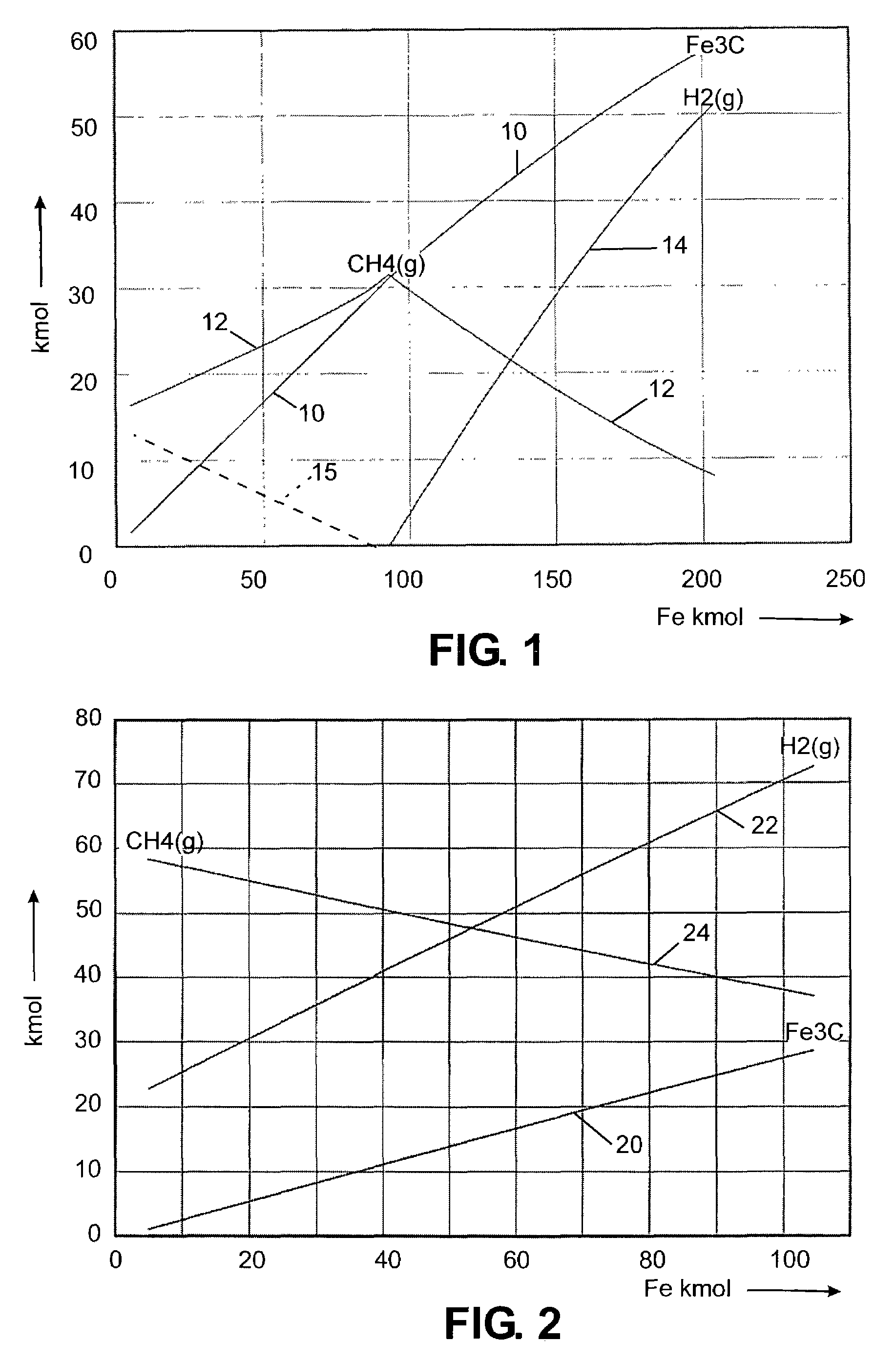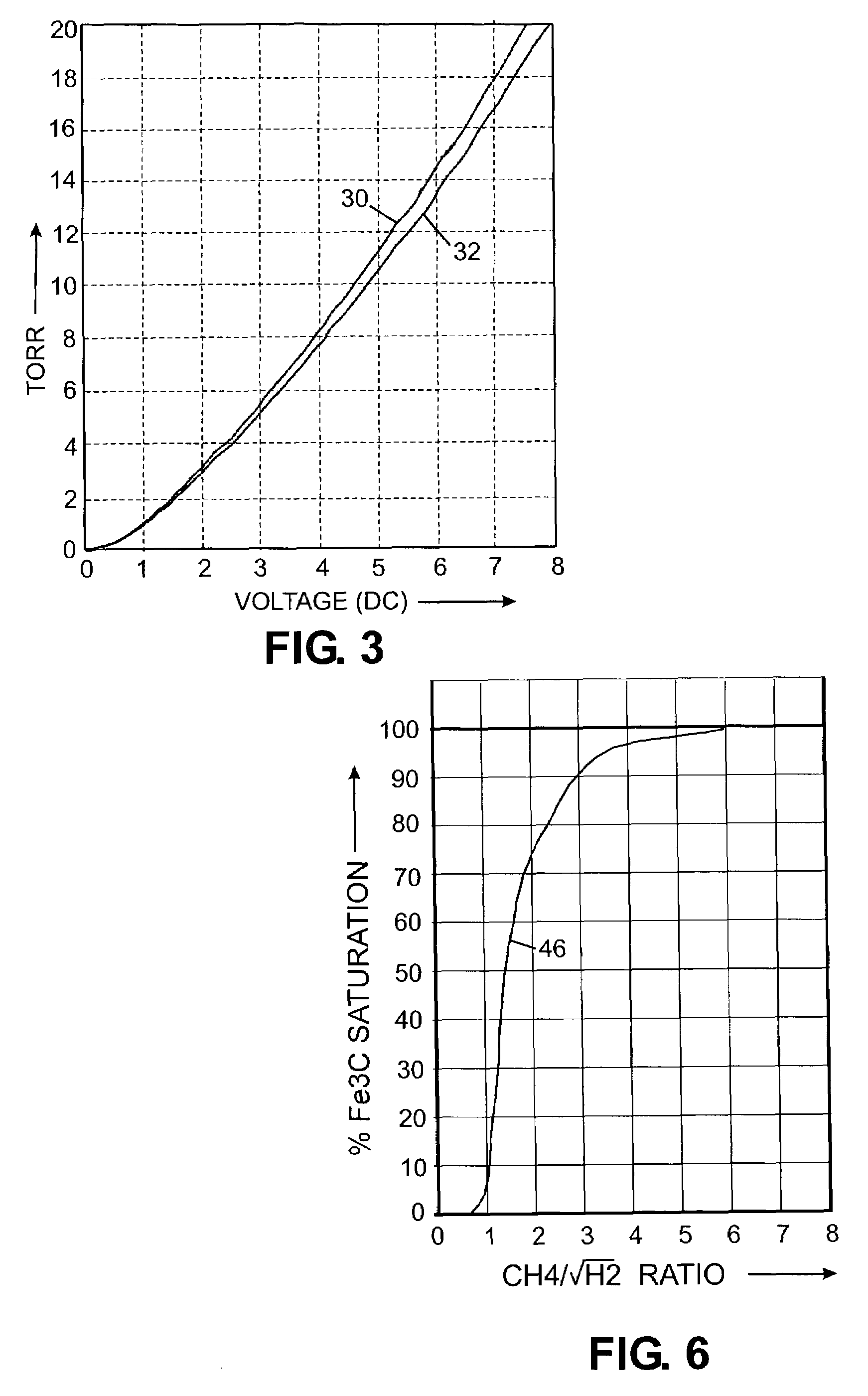Vacuum carburizing with napthene hydrocarbons
a technology of napthene hydrocarbons and vacuum carburizing, which is applied in the direction of heat treatment apparatus, solid-state diffusion coating, manufacturing tools, etc., can solve the problems of uneven carburizing, inability to produce stress risers and change parts, etc., to achieve precise control and repeatability of the process
- Summary
- Abstract
- Description
- Claims
- Application Information
AI Technical Summary
Benefits of technology
Problems solved by technology
Method used
Image
Examples
Embodiment Construction
[0065]The Detailed Description of the Invention set forth below is for the purpose of illustrating preferred and alternative embodiments of the invention and is not necessarily for the purpose of limiting the invention.
A. The Carburizing Medium
[0066]As discussed in the Background, the carburizing gases heretofore used in vacuum carburizing processes are aliphatics, either saturated or unsaturated. As is well known, the carbons in the aliphatic families can be characterized as string compounds with a backbone classified as either a straight chain or a branch chain. This invention, in its broad sense, selects as the carburizing medium hydrocarbons having a molecular structure in which the carbon atoms are arranged in rings in marked contrast to the string or chain carbon structure which characterizes the aliphatics. As used herein, and as a matter of definition, the term “cyclic hydrocarbon” means those hydrocarbons having a carbon ring alignment connected by any number of bonds. In a...
PUM
| Property | Measurement | Unit |
|---|---|---|
| pressure | aaaaa | aaaaa |
| temperature | aaaaa | aaaaa |
| pressure | aaaaa | aaaaa |
Abstract
Description
Claims
Application Information
 Login to View More
Login to View More - R&D
- Intellectual Property
- Life Sciences
- Materials
- Tech Scout
- Unparalleled Data Quality
- Higher Quality Content
- 60% Fewer Hallucinations
Browse by: Latest US Patents, China's latest patents, Technical Efficacy Thesaurus, Application Domain, Technology Topic, Popular Technical Reports.
© 2025 PatSnap. All rights reserved.Legal|Privacy policy|Modern Slavery Act Transparency Statement|Sitemap|About US| Contact US: help@patsnap.com



